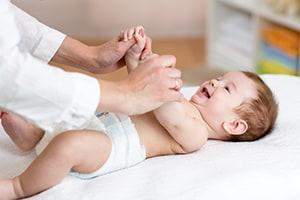Help Center
Online Resource Center for Information on Birth Injuries.

Erb’s Palsy is an injury to the arm which is primarily characterized by weakness (the meaning of palsy), as well as paralysis in more severe cases. It arises most often as a consequence of complications during delivery. Like other birth injuries, your physician should recognize the risks and signs of Erb’s Palsy ahead of time and take all necessary preventative measures to protect your child’s health throughout the delivery process and diagnose the condition promptly if it occurs.
Erb’s Palsy is distinguished from other injuries to the brachial plexus (such as Klumpke’s paralysis) in that it specifically affects the upper two of the five brachial plexus nerves (C5&C6) and often does not prevent lower arm movements such as the wiggling of fingers. The brachial plexus is the set of nerves in the shoulder area which connects the neck to the arm. For this reason, it is usually complications during delivery which put undue pressure upon a baby’s shoulder area and subsequently result in Erb’s Palsy.
The brachial plexus is the most important set of nerves located within the arm, and their role is to give movement, flexibility, and feeling to the arm, hand, and fingers. These nerves consist of thousands of fibers which carry electrical signals back and forth between the brain and the muscles of the arm and hand. When injured, normal nerve impulses are impaired and the spinal cord is unable to send messages to the arm, hand, wrist, and/or fingers as they normally would. As a consequence of the damage to these important nerves, Erb’s Palsy produces weakness and underdevelopment in the affected arm, along with additional symptoms including paralysis in more severe cases.
Depending on the severity of the injury, Erb’s Palsy is typically classified into four categories, which are characterized as follows: